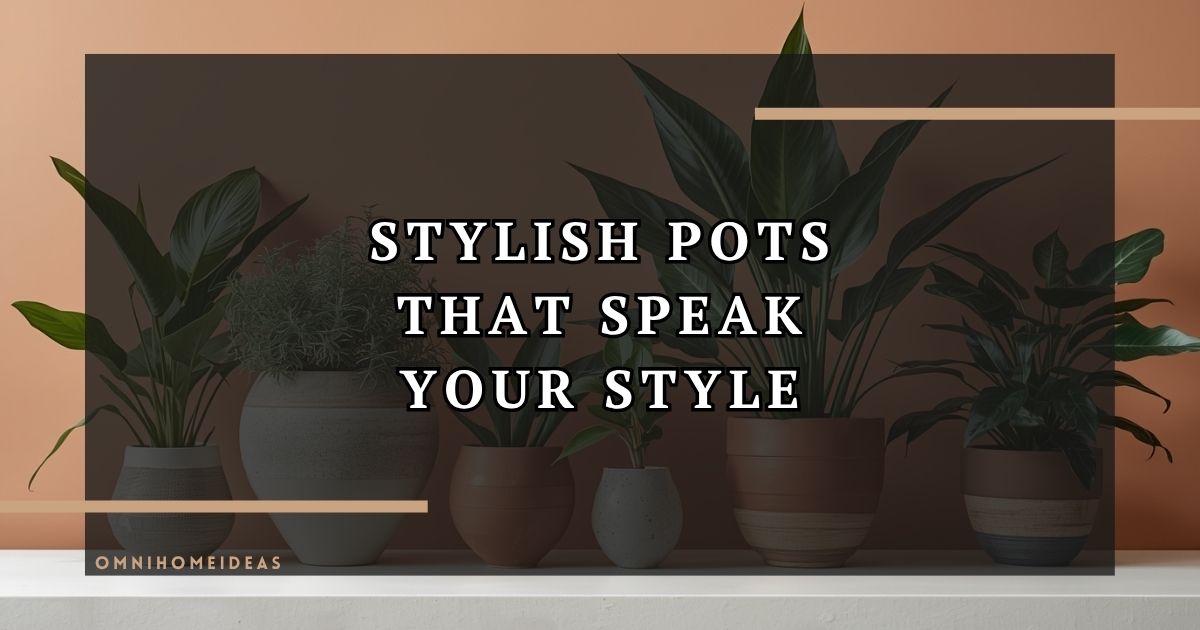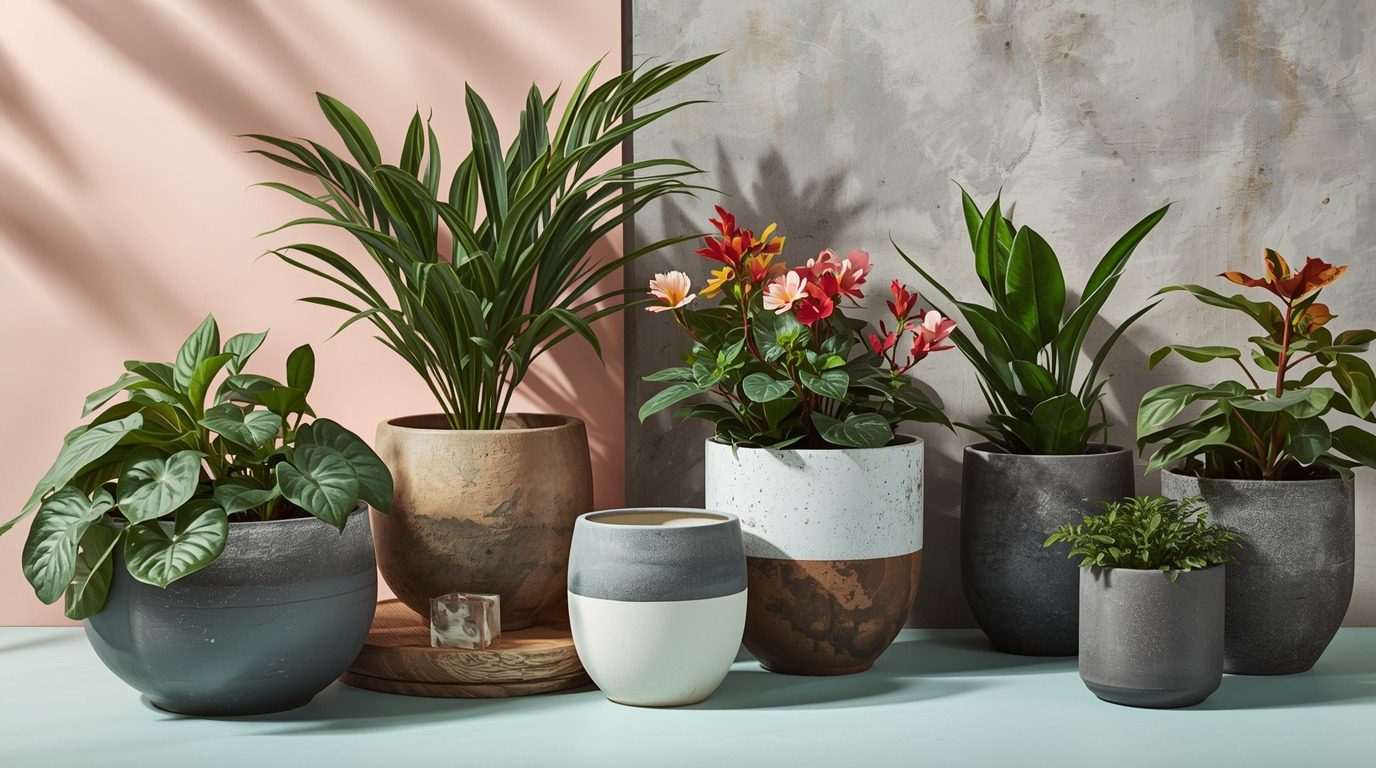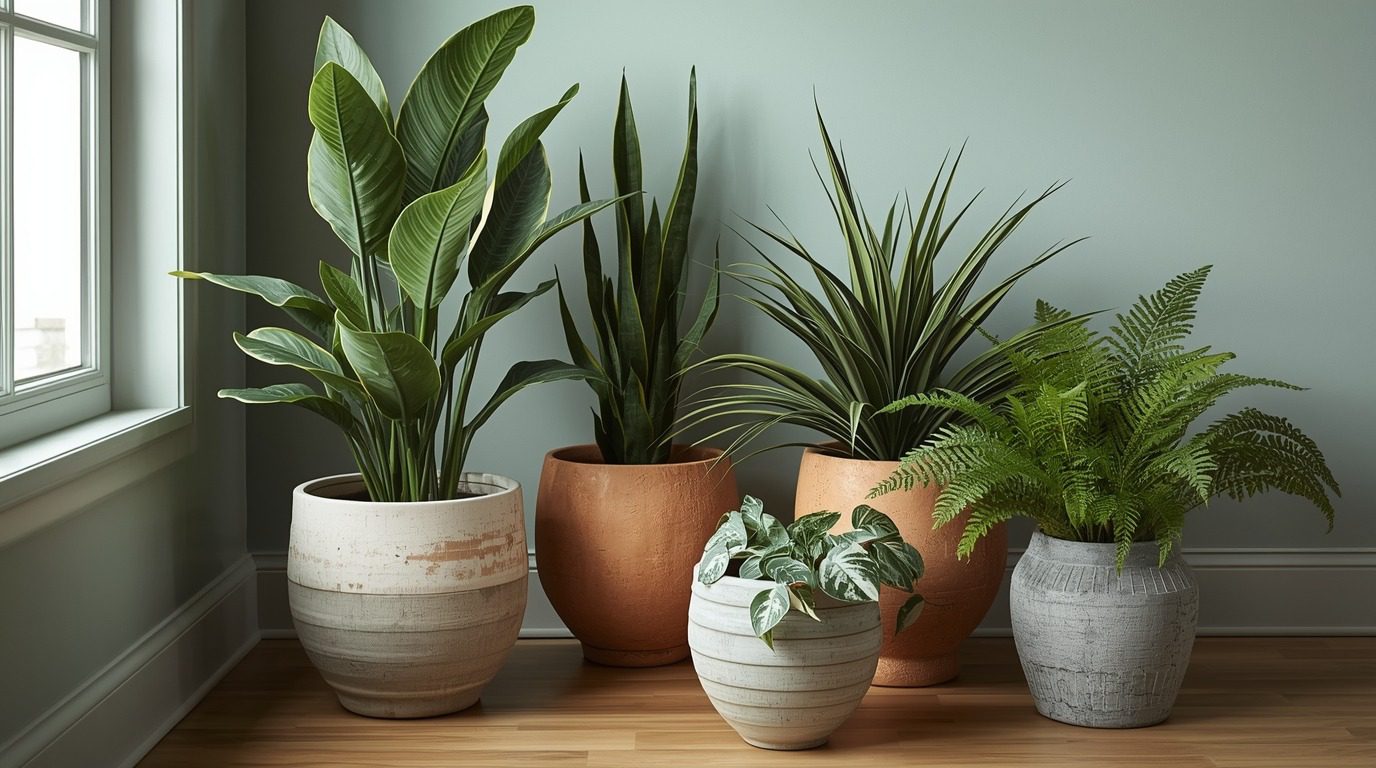When you think about interior design, pots might not be the first thing that comes to mind. But here’s a secret designers know well: planters can shape a room’s personality just as much as furniture or art. From minimalist offices to lush living rooms, the right pot transforms how plants, and spaces, are perceived.
Pots are more than vessels for your greenery; they’re storytelling tools. Each material, texture, and color choice helps narrate the style of your space.

Why Your Choice of Pots Matters
A plant without the right pot is like a great outfit without its accessories—it still works, but it’s not memorable. The container determines whether your greenery reads as boho, modern, industrial, or cozy chic.
Example:
A snake plant in a matte black geometric pot feels sleek and architectural, perfect for a minimalist office. The same plant in a woven basket planter suddenly evokes comfort and natural warmth, ideal for a Scandinavian-style home.
Understanding Pot Materials and Their Design Impact

Each pot material carries its own aesthetic and energy. Choosing wisely helps you reinforce your design theme.
Clay & Terracotta: The Timeless Classics
- Best for: Rustic, Mediterranean, or bohemian interiors.
- Design tip: Terracotta pots warm up cool-toned spaces. Group them with wood and natural fibers to create a grounded, earthy look.
- Example: A row of terracotta planters with herbs on an office windowsill can make even a sterile workspace feel artisanal and welcoming.
Ceramic & Porcelain: Polished and Versatile
- Best for: Modern, eclectic, or transitional interiors.
- Design tip: Glazed ceramics add a pop of color and reflect light beautifully. Mix glossy white ceramics with matte finishes for subtle sophistication.
- Example: A large white ceramic pot holding a fiddle-leaf fig can instantly elevate a living room corner into an Instagram-worthy focal point.
Concrete & Stone: Industrial Edge
- Best for: Loft apartments, urban offices, or minimalist settings.
- Design tip: Use concrete planters with structural plants (like snake plants or monstera) to create strong, sculptural accents.
- Example: Pair a square concrete planter with black metal shelving for a raw, urban aesthetic.
Woven Baskets & Natural Fibers: Organic Warmth
- Best for: Scandinavian, coastal, or tropical interiors.
- Design tip: These add texture and coziness. Perfect for softening sleek modern spaces.
- Example: A basket pot with a peace lily next to a linen sofa blends effortlessly with light wood tones and airy curtains.
Metal & Glass: Modern Luxe
- Best for: Glam, art deco, or mid-century modern interiors.
- Design tip: Metallic finishes—brass, copper, or chrome—introduce elegance and a reflective quality that brightens corners.
- Example: A golden metal planter with cascading pothos brings sophistication to a contemporary office reception area.
Playing with Shape, Scale, and Placement

The form of your planter also affects your overall aesthetic.
Balance is Everything
Pair tall, slender pots with broad-leafed plants for contrast. Wide, bowl-shaped pots, on the other hand, suit low-growing varieties like succulents or ferns.
Group for Impact
A single plant can make a statement, but clusters tell a story.
- Example: Three different-sized ceramic pots—one tall, one medium, one small—placed in a corner create a layered, designer-approved look.
Mix Materials Intentionally
Combining pot styles is a great way to showcase personality—just keep a unifying element like color or tone.
- Example: For effortless harmony, combine a concrete planter, a rattan basket, and a white ceramic pot, all within a neutral palette.
The Power of Custom Planters
Sometimes, an off-the-shelf pot just doesn’t fit the vision. That’s where custom planters make all the difference. Being able to order pots in specific shapes, colors, and finishes allows designers to align every detail with the project’s mood board—whether it’s a minimalist office needing uniform matte-black cylinders or a boutique hotel lobby calling for handcrafted, oversized terrazzo planters. Custom designs ensure that every container feels intentional and integrated, turning practical plant vessels into bespoke design statements.
Using Pots to Define Spaces

Even in open-plan homes and offices, pots can subtly structure a layout.
In Homes
- Use tall planters to mark entryways or transition points between living and dining areas.
- Style smaller planters on shelves or side tables for continuity and flow.
- Add hanging planters in kitchens or bathrooms to make use of vertical space.
In Offices
- Cluster large planters around desks or lounge corners to create “green zones” that reduce stress and noise.
- Use uniform pot styles to maintain a cohesive professional look while still introducing nature.
Example: A tech office might use matte grey concrete planters for consistency, while a creative agency could mix patterned ceramic pots to spark visual energy.
Pot Styling Mistakes to Avoid
Even the best plants can lose their charm if the pot styling feels off.
- Too many colors: Limit your palette to 2–3 tones for a cohesive look.
- Ignoring scale: A small plant in a massive pot looks awkward. Match proportions.
- No drainage plan: Beauty means nothing if your plant’s roots drown. Always consider practical design.
Final Thoughts
Pots are the unsung heroes of interior design, a chance to express personality, texture, and tone. Whether you favor earthy terracotta, sleek concrete, or luxurious metals, every planter you choose contributes to your space’s visual narrative.So go beyond clay and ceramics. Let your pots tell a story—your story—and watch your interiors come alive.

